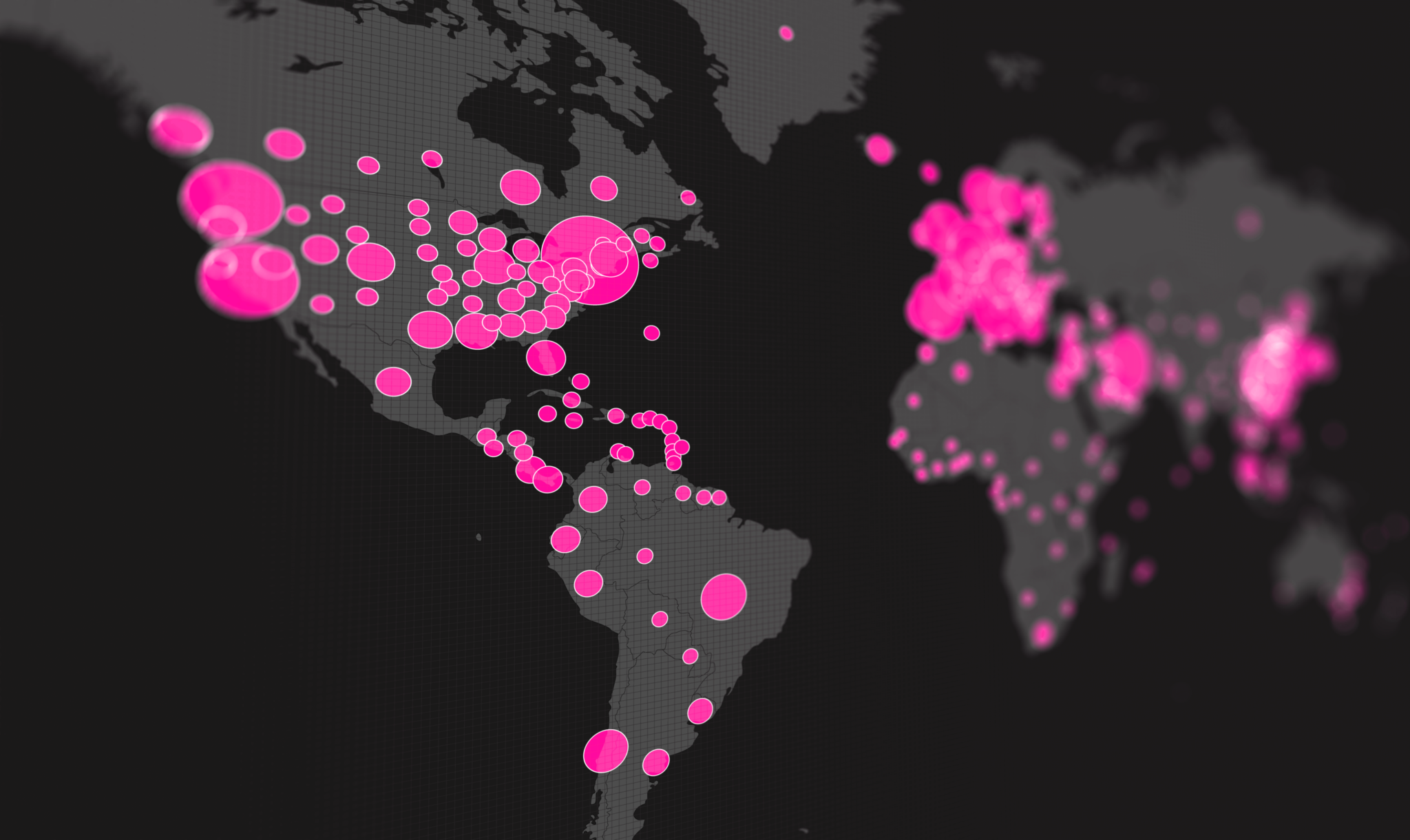This website uses cookies so that we can provide you with the best user experience possible. Cookie information is stored in your browser and performs functions such as recognising you when you return to our website and helping our team to understand which sections of the website you find most interesting and useful.
The global market is an ever-increasing opportunity. With this, organisations need to place more and more impetus on their international offering.
Audiences expect to see country-specific knowledge whilst maintaining global insights.
Geo-targeting your website or webpages presents the perfect opportunity for your organisation to make this expansion into additional territories.
Before we delve in, let’s clarify what Geo-Targeted Landing Pages actually are:
Geo-targeting is the process of tailoring websites or webpages to a geographical location set by the owner of the website.
This Geographical location can be as specific as you would like. For example, you could look to target a continent such as Asia, or filter down to an individual town or city.

What are the benefits of a Geo-targeting your landing pages?
Are you a part of an organisation that is considering expanding operations in a new country or already has physical operations in multiple countries?
If so, expanding your website to include Geo-targeted landing pages is a strategy it would be beneficial to adopt.
Having Geo-targeted landing pages for different locations unlocks the potential of connecting with a particular audience on a deeper level.
Over the last decade, multiple surveys have been completed into consumer buying behaviour in different countries. The results collected in a 2020 survey by CSA research showed that 76% of users prefer products with information in their own language. (Source: CSA research, 2020)
Further strengthening your connection with your customers, Geo-targeting is a serious strategy to consider.
What steps do I need to implement before creating a Geo-targeted landing page?
Your first step is to ensure you do the appropriate levels of research before implementing any changes to your website. This may be through internal departments, or by outsourcing to an agency that specialises in web and content development.
Following this you also need to consider is translation of your content. For example, as a UK company your website will be written in English. Whilst many countries are fluent in English, it does not reinforce your abilities as an international organisation to only provide content in the English language. Evaluate which countries you are targeting and publish authentic translations relevant to the audience. It is best practise to ensure these are translated by a native speaker, or someone fluent within that language to avoid errors or miscommunication that automated translation services can result in.
Before producing any Geo-targeted content complete some market research to educate you on what the best solution is for your organisation when it comes to language and translations.
This research exercise should contain an audit of how your potential customers and competitors position themselves in the market. In addition, an understanding of the localised culture is crucial to the success of any Geo-targeted content.
How do I maximise the SEO performance of my Geo-targeted landing page?
It is crucial to optimise both the content and technical aspects of your website. This will allow you to fall in line with SEO best-practise techniques.
No matter how good the content on a site is if it isn’t configured with SEO in mind then it makes it difficult for search engines to crawl and rank your webpages.
With just a few SEO techniques there are a couple of changes that you can implement that can make a big difference to the performance of your page.
Just as an example we will use Australia as the location for your Geo-targeted landing page.
Multiple aspects of the page need to be tailored to the Australian market to give the page any chance of competing:
- Mention several times throughout the page content that your services relate to the Australian market (including your H1 and H2 tags, alongside any meta data on the page)
- Include the address of your Australian office to enhance local search.
If Google crawls your page/site and they see there is no mention of a physical location, this can lead them to question. Do they actually have a presence in this country?
- Don’t forget to use images that are relatable to the target audience.
Your Australian operations would lose credibility as soon as the user sees you haven’t used images relating to the Australian market. Also remember to add your meta tags to images so that they can be displayed on Google Image results.

Do I need to produce a whole new set of content for my Geo-targeted landing pages?
Duplicate content is a big no when it comes to performing well in Google’s SEO rankings.
However, this doesn’t mean that you need to produce a new set of content with all of your Geo-targeted landing pages.
The set of content you have for your original site can be adapted and repurposed when implementing a Geo-targeting strategy.
As fore-mentioned the location of your operations needs to be woven into the Geo-targeted landing pages. Outside of this content, your research should be able to guide you, on the types of content that the localised audience would expect/want to see.

How can Geo-targeting contribute to my global strategy?
Evaluate your audience personas and locations, and ask the question: Would a user rather choose to enter business with an organisation with no international understanding, or one that clearly switched on to the culture in a countries market?
Having content tailored to a specific geographic location strengthens your organisations offering in the eye of the consumer. This allows you to formulate stronger relationships with your customers.
As showcased by our own international offerings, creating unique, empowering strategies that addresses the unique needs of an audience in specific territories connects companies with their global communities.
Our award-winning approach has led us to develop strong relationships with clients across the Healthcare and STEM industries. This allows us to create strategies to connect with global audiences. To discover more about how your next project could benefit from our global insight, explore our case studies below.
References
CSA Research. (2020) Survey of 8,709 Consumers in 29 Countries Finds that 76% Prefer Purchasing Products with Information in their Own Language. Available at: https://csa-research.com/Blogs-Events/CSA-in-the-Media/Press-Releases/Consumers-Prefer-their-Own-Language (Accessed: January 5, 2023)
Share this

